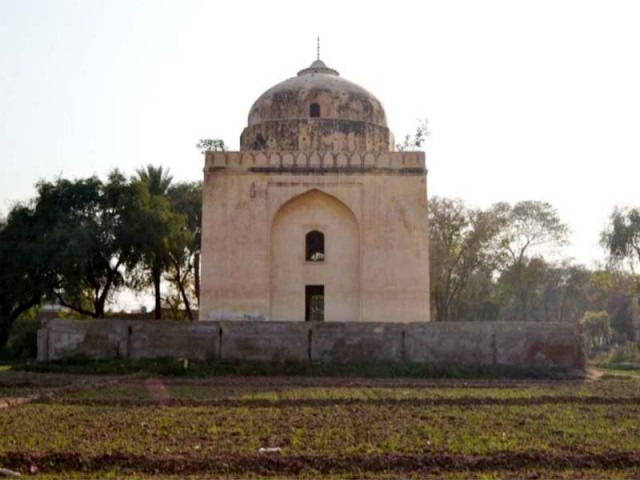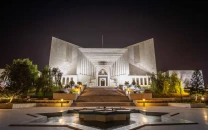One man papers over cracks of Shaikh Imamuddin’s tomb
17th-century tomb and mosque in a state of disrepair while a keeper uses adobe to fix cracks

PHOTO: FILE
The structure has been ignored by the government and has even lost favour with the public with the last annual Urs being held over 20 years ago.
Pained by the sight of the decaying structures, one man has taken it upon himself to care for this testament of history and the Sufic soul of the region.
Sixty-year-old Khalilur Rahman has been using adobe to paper over the cracks which emerge in the building from time to time and to preserve the broken, but intricate motifs.
But no matter the effort he makes, hamstrung by limited knowledge and tools, he cannot keep the Mughal-style designs on the interior of the mosque from fading away.
“It [tomb and mosque] have suffered a lot,” Rahman told The Express Tribune.
“There is no one to take care of this historical tomb,” lamented the Buner native who had moved to the Palosai village around 40 years ago to care for the tomb.
While much of its colour and design has washed out, Rahman believes that the mosque and tomb’s true grandeur lay in the people who frequented it. But this has been lost.
While a board outside the tomb reads that it is protected under the K-P Antiquities Act, but the government has for a long time has forgotten about it.
Rahman recounted that in the past the government had undertaken some preservation work on the tomb and a guard had also been deployed, but even the guard has not been performing his duties for a while.
The tomb keeper added that while some locals, out of reverence for the mosque, do try to preserve it but have used adobe without any know-how in preservation techniques, had covered the designs and patterns.
“Unless proper preservation is carried out, this historic structure will be declared as a dead structure,” he feared.
Pir-e- Bala
Shaikh Imamuddin was born in the Budhni village of Peshawar in 1611 AD. His mother, Taj Bibi, was the daughter of Malik Darweza and hailed from Afghanistan’s royal Khalil tribe.
Like his ancestors, Imamuddin too was renowned for his piety and being a great scholar, Rahman said.
The keeper said that locals attached great reverence for Imamuddin, referring to him as Pir-e- Bala because he would sit on a large stone in the middle of a Khuwar (dried stream) for meditation.
Imamuddin died at around 40-years-of-age in 1650 (coincidentally he was born and passed away in the months of Muharram). He was laid to rest near Palosi, where, over time, a small hamlet sprouted and came to be known as Da Palosai Piraan.
His disciples, including Shaikh Abd al-Razzaq and Shaikh Abd al-Haq, built Imamuddin’s tomb, completing it in 1659.
Today, the monument is located on the old Michni road, once a thoroughfare used by the Mughals and connected the Khyber Agency with Peshawar.
Despite the existence of the tomb for centuries, few locals know just why is Imamuddin revered.
“Not many people here know about the lives of Imamuddin,” lamented Rahman.
Quasi Mughal construction
Abdul Hanan Afridi, an architect associated with Cecos University and has studied the tomb’s structure in detail, said that the structure of the tomb had been built from small burnt bricks of which were then set in lime mortar – a popular cement used at the time.
Moreover, Afridi said it appears that the building was finished off with a thick coat of yellowish plaster patches on the outside, remnants of which can still be seen on the façade.
The grave chamber can be accessed through a gateway which opens onto the south side of the structure into a vaulted passage. Each side of the burial chamber contains two windows of varying size and shape with remnants of pottery grills.
The facade of the mosque is of medium height, around 5.70 metres with a raised section in the middle where it gains another 0.67m. The façade also has three arched entrances.
The mosque’s interior is painted and Rahman has helped keep in good repair.
Published in The Express Tribune, January 28th, 2018.



















COMMENTS
Comments are moderated and generally will be posted if they are on-topic and not abusive.
For more information, please see our Comments FAQ